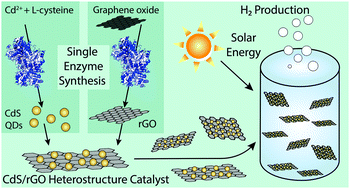2019/7/24 アメリカ合衆国 ワシントン大学セントルイス校

・ ワシントン大学セントルイス校が、データ解析や量子力学的計算により発見された新しい二重ぺロブスカイト型酸化物を用いて、太陽光発電アプリケーション用のより安定した、鉛成分を含まない毒性の低い半導体を作製。シリコン系の太陽電池に代わる、安価で高効率な代替品となりうる可能性が期待される。
・ 新しい半導体 KBaTeBiO6 は、カリウム、バリウム、テルル、ビスマスと酵素で構成。この非鉛化二重ぺロブスカイト型酸化物は、30,000 の潜在的なビスマス系酸化物のひとつ。これら 30,000 のうち、わずか 25 が既知の化合物。
・ 研究チームは、材料情報科学と量子力学的計算を用いて、KBaTeBiO6 が 30,000 のビスマス系酸化物の中では最も信頼性が高いことを発見。大部分の酸化物は大きなバンドギャップをもつ傾向にあるが、新技術による化合物はより低いバンドギャップをもち、ハロゲン化ぺロブスカイトに近く、特性は適度に良好。
・ バンドギャップは、電子が自由キャリアを形成するために乗り越えなければならないエネルギー障壁であり、太陽電池は、自由キャリアを抽出して電子デバイスに電力を供給、貯蓄できる。バンドギャップを乗り越えるために必要なエネルギーは、太陽光から与えられる。太陽光発電アプリケーション用として最も信頼性が高い化合物のバンドギャップは、約 1.5eV。
・ 研究チームは 6 か月かけて材料を合成し、バンドギャップが 1.88eV で安定した予想通りの半導体を実証。
・ 今後バンドギャップの微調整が必要ではあるが、本研究は、非毒性太陽電池開発実現への更なる一歩となった。ハロゲン化鉛ペロブスカイトから離脱できれば、太陽電池のみならず、LCD ディスプレイのような他の半導体アプリケーション用の半導体設計においても、非常に大きな分野が拓かれる。
・ 今後は、この新しい半導体の欠陥の役割を検証し、エアロゾル技術のようなより進化した合成技術の利用を探求する。
・ 本研究は、米国科学財団(NSF)助成金番号 1806147 と、オークリッジ関連大学の Ralph E. Powe Junior Faculty Enhancement Award より資金を得た。
URL: https://source.wustl.edu/2019/07/a-good-first-step-toward-nontoxic-solar-cells/
(関連情報)
Chemistry of Materials 掲載論文(アブストラクトのみ:全文は有料)
KBaTeBiO6: A Lead-Free, Inorganic Double-Perovskite Semiconductor for Photovoltaic Applications
URL: https://pubs.acs.org/doi/10.1021/acs.chemmater.9b01025
<NEDO海外技術情報より>
Abstract
Solar cells made up of lead-halide perovskites have shown a remarkable increase in power conversion efficiency; however, they are plagued with instability issues that, combined with the toxicity of lead, have led to a search for new semiconductors made up of heavy and nontoxic metals such as bismuth. Here, we report on a new, inorganic, double perovskite oxide semiconductor: KBaTeBiO6, which has an experimental indirect band gap of 1.88 eV and shows excellent stability. We combined data analytics and high throughput density functional theory calculations to search through thousands of hypothetical inorganic double perovskite oxides containing bismuth and predict KBaTeBiO6 as a potential photovoltaic material, which was subsequently synthesized using a wet-chemistry route. The calculated effective mass of the charge carriers for KBaTeBiO6 is comparable to the best performing Bi-halide double perovskites. Our work demonstrates the untapped potential of inorganic Bi-based double perovskite oxides—that offer the ability to change both the cation combination and their stoichiometry to achieve desired electronic properties—as exciting, benign, and stable alternatives to lead-halide perovskites for various semiconducting applications.



